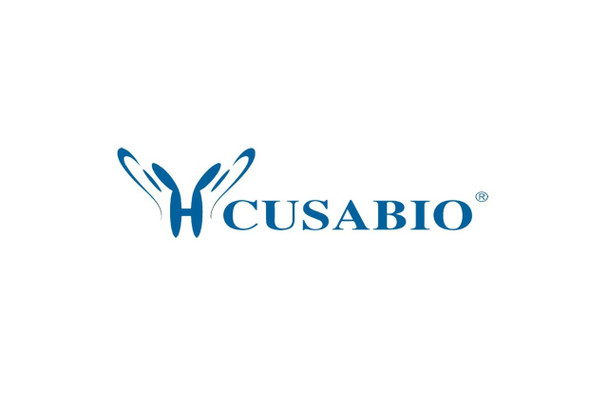Cusabio Mouse Recombinants
Recombinant Mouse Receptor-interacting serine/threonine-protein kinase 3 (Ripk3) | CSB-YP886403MO
- SKU:
- CSB-YP886403MO
- Availability:
- 3 - 7 Working Days
Description
Recombinant Mouse Receptor-interacting serine/threonine-protein kinase 3 (Ripk3) | CSB-YP886403MO | Cusabio
Alternative Name(s): RIP-like protein kinase 3Receptor-interacting protein 3 ;RIP-3 ;mRIP3
Gene Names: Ripk3
Research Areas: Others
Organism: Mus musculus (Mouse)
AA Sequence: MSSVKLWPTGASAVPLVSREELKKLEFVGKGGFGVVFRAHHRTWNHDVAVKIVNSKKISWEVKAMVNLRNENVLLLLGVTEDLQWDFVSGQALVTRFMENGSLAGLLQPECPRPWPLLCRLLQEVVLGMCYLHSLNPPLLHRDLKPSNILLDPELHAKLADFGLSTFQGGSQSGSGSGSGSRDSGGTLAYLDPELLFDVNLKASKASDVYSFGILVWAVLAGREAELVDKTSLIRETVCDRQSRPPLTELPPGSPETPGLEKLKELMIHCWGSQSENRPSFQDCEPKTNEVYNLVKDKVDAAVSEVKHYLSQHRSSGRNLSAREPSQRGTEMDCPRETMVSKMLDRLHLEEPSGPVPGKCPERQAQDTSVGPATPARTSSDPVAGTPQIPHTLPFRGTTPGPVFTETPGPHPQRNQGDGRHGTPWYPWTPPNPMTGPPALVFNNCSEVQIGNYNSLVAPPRTTASSSAKYDQAQFGRGRGWQPFHK
Source: Yeast
Tag Info: N-terminal 6xHis-tagged
Expression Region: 1-486aa
Sequence Info: Full Length
MW: 55.3 kDa
Purity: Greater than 90% as determined by SDS-PAGE.
Relevance: Essential for necroptosis, a programmed cell death process in response to death-inducing TNF-alpha family mbers. Upon induction of necrosis, RIPK3 interacts with, and phosphorylates RIPK1 and MLKL to form a necrosis-inducing complex. RIPK3 binds to and enhances the activity of three metabolic enzymes: GLUL, GLUD1, and PYGL. These metabolic enzymes may eventually stimulate the tricarboxylic acid cycle and oxidative phosphorylation, which could result in enhanced ROS production.
Reference: Mouse receptor interacting protein 3 does not contain a caspase-recruiting or a death domain but induces apoptosis and activates NF-kappaB.Pazdernik N.J., Donner D.B., Goebl M.G., Harrington M.A.Mol. Cell. Biol. 19:6500-6508(1999)
Storage: The shelf life is related to many factors, storage state, buffer ingredients, storage temperature and the stability of the protein itself. Generally, the shelf life of liquid form is 6 months at -20?/-80?. The shelf life of lyophilized form is 12 months at -20?/-80?.
Notes: Repeated freezing and thawing is not recommended. Store working aliquots at 4? for up to one week.
Function: Essential for necroptosis, a programmed cell death process in response to death-inducing TNF-alpha family members. Upon induction of necrosis, RIPK3 interacts with, and phosphorylates RIPK1 and MLKL to form a necrosis-inducing complex. RIPK3 binds to and enhances the activity of three metabolic enzymes
Involvement in disease:
Subcellular Location: Cytoplasm, cytosol, Cell membrane, Mitochondrion
Protein Families: Protein kinase superfamily, TKL Ser/Thr protein kinase family
Tissue Specificity: Expressed in embryo and in adult spleen, liver, testis, heart, brain and lung.
Paythway:
Form: Liquid or Lyophilized powder
Buffer: If the delivery form is liquid, the default storage buffer is Tris/PBS-based buffer, 5%-50% glycerol. If the delivery form is lyophilized powder, the buffer before lyophilization is Tris/PBS-based buffer, 6% Trehalose, pH 8.0.
Reconstitution: We recommend that this vial be briefly centrifuged prior to opening to bring the contents to the bottom. Please reconstitute protein in deionized sterile water to a concentration of 0.1-1.0 mg/mL.We recommend to add 5-50% of glycerol (final concentration) and aliquot for long-term storage at -20?/-80?. Our default final concentration of glycerol is 50%. Customers could use it as reference.
Uniprot ID: Q9QZL0
HGNC Database Link: N/A
UniGene Database Link: UniGene
KEGG Database Link: KEGG
STRING Database Link: STRING
OMIM Database Link: N/A









